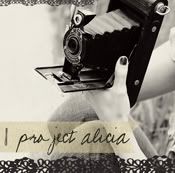So one of my goals I set on New Year's Day was to share some of what I have learned on my blog. If you follow along you know that I am a teacher by trade. Despite this fact, I have felt super hesitant to do any sort of "teaching" on the blog as I find myself feeling unqualified to do so. However, I have been so grateful for all of the people who have put themselves out there to share what they have learned because it has helped me in my photography journey. It only seems right to give back a little and hopefully help someone move forward a step or two on their own journey. So, without further ado here are a few tips and tricks I have learned about shooting sunbursts and starbursts (along with some of my favorite sunburst shots)...
Tips/Tricks (see below for more details)
1. Shoot in RAW
2. Choose a larger aperture number
3. Meter off the sky
4. Take your shot and then change your perspective and repeat!
Settings: ISO 200, 29mm, ss1/160, f/25
Quincy Wildlife Recreation Area, Quincy, WA - June 2012
1. Shoot in RAW - I do this for all of my photos, but with sunbursts especially it makes processing easier.
Settings: ISO 200, 18mm, ss1/500, f/18
Washington State Ferry - December 2011
Settings: ISO 200, 18mm, ss1/100, f/22
Birch Bay, WA - April 2012
2. Choose a large number aperture - My go to for getting the best sunburst shape is f/22, but I have gone as low as f/11 or f/16 in certain situations. And one time even as low as f/5.6, but I think that had more to do with the angle of the sun and camera than the aperture. I have also gone higher such as f/25. Usually the higher the number the more defined the sunburst. In some cases this means using a tripod because the aperture is letting in so little light that your shutter needs to be open longer to expose properly.
As I read on a site when I was first researching how to shoot sunbursts, this is similar to when you squint your eyes thereby letting in less light (just as higher aperture numbers do) and the points of light become starburst shapes. And yes I did try this as I was reading and yes it did help me understand shooting starbursts (just in case you find yourself squinting at a light as you read this :o).
Settings: ISO 200, 18mm, ss1/320, f/22
Clark Lake Park, Kent, WA - March 2012
Settings: ISO 100, 50mm, ss1/640, f/20
Puyallup Fair, Puyallup, WA - September 2012
3. Meter off the sky - I use spot metering and when I shoot sunbursts I expose (or meter off of) the sky. This can be a little tricky as you are shooting directly into the sun, which can make seeing your light meter difficult. Two things I do about this:
1. Wear sunglasses. Even though this distorts the image color a bit, it helps your eyes not get blinded by the bright sun. And
2. Hold the camera still (or use a tripod) and press down the shutter button halfway so the light meter shows up on your LCD screen and adjust your shutter speed while continuing to hold the camera still.
In many cases when you meter off the sky with the sunlight in the picture it can create an image that is a bit underexposed, but that can be adjusted in post processing.
Settings: ISO 200, 24mm, ss1/320, f/25
Long Beach, WA - February 2012
4. Take your shot and then change your perspective and repeat! Some of my favorite sunburst shots have come from laying on the ground or standing up when I have started in a different position.
Settings: ISO 400, 55mm, ss1/320, f/5.6
Point Defiance Park Dahlia Test Garden in Tacoma, WA - August 2012
You can also use some of these tricks (shoot in RAW and high aperture number) to capture starbursts (the same as sunbursts, but with lights and not the sun)!
Settings: ISO 400, 50mm, ss13.0sec, f/22
Lewis and Clark Bridge connecting Oregon and Washington
with the Lights of Longview, WA - January 2012
"In learning you will teach, and in teaching you will learn.” - Phil Collins
As a side note, if some or most of this sounds like a foreign language to you (which has been the case for me many times over the course of my photography learning) this post does assume that you are shooting on manual. If you aren't I highly recommend you check out
Courtney at Click It Up a Notch's posting on shooting manual mode. It is what got me started and I am so happy I have made the switch to manual!
And of course, if you have any questions please feel free to ask in the comments or through email.
(I would love to know what you thought of my first tips and tricks post! Feedback is always welcome! :o).










































